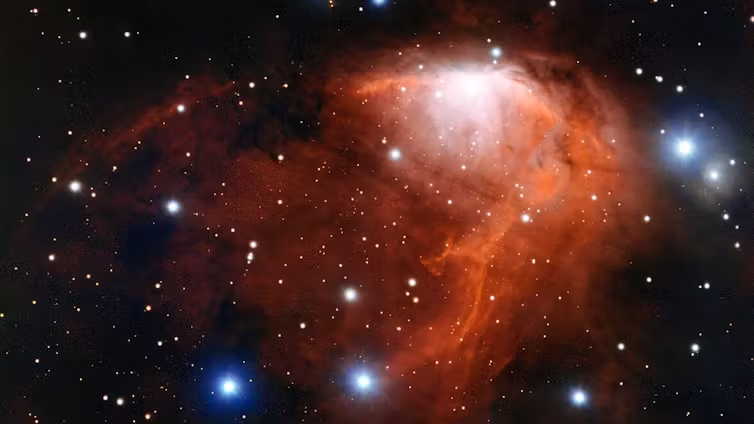Chemistry Behind Star Formation
Did you know the first gas clouds that formed stars were warm, about room temperature? These clouds, known as protostellar clouds, experience internal pressure that pushes outward. This pressure is similar to how a hot air balloon stays inflated. If the balloon’s flame goes out, the air cools, and the balloon starts to collapse.
Only the largest protostellar clouds, which have strong gravitational forces, could overcome this internal pressure and collapse. This means the earliest stars formed were massive. To create smaller stars, these clouds needed to cool down.
In space, gas cools primarily through radiation. This process turns thermal energy into light, allowing it to escape the cloud. While hydrogen and helium atoms aren’t great at radiating energy at lower temperatures, molecular hydrogen (H₂) excels at it. When energized, H₂ emits infrared light, cooling the gas and reducing internal pressure, making it easier for smaller clouds to collapse into stars.
For years, scientists believed that the early universe had a low amount of H₂, leading to hotter clouds with high internal pressure. As a result, only massive clouds could collapse, resulting in the formation of bigger stars.
This thinking is evolving. In a recent study, physicist Florian Grussie and his team at the Max Planck Institute found that Helium hydride (HeH⁺), the universe’s first molecule, may have been more common in the early universe than previously believed. Their research involved computer simulations and laboratory experiments, shedding light on how the universe’s chemistry has shaped star formation.
Understanding these processes not only helps us learn about our universe’s past but can also inform future discoveries in astrophysics. As scientists delve deeper into the chemistry of star formation, we may uncover even more secrets about our cosmic origins.
For more detailed insights, you can explore research from the Max Planck Institute and other reputable sources.












&w=480&resize=480,480&ssl=1)







